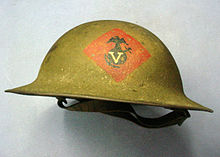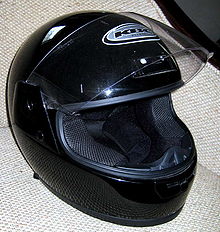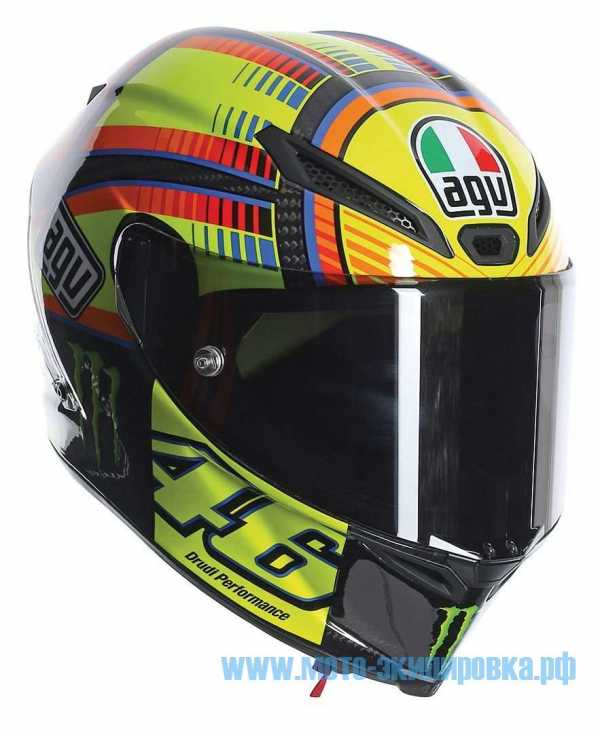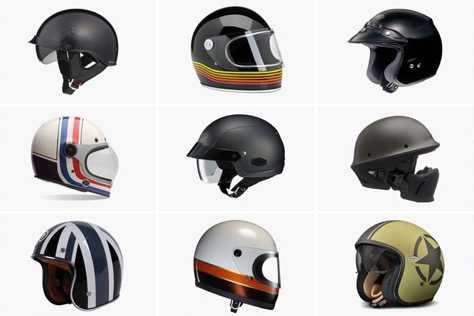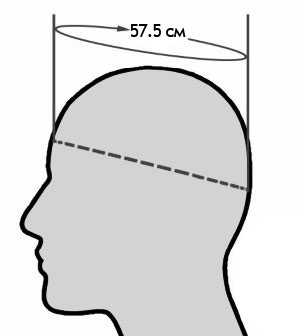Халкидский шлем. Шлем халкидский
Халкидский шлем — Википедия
Материал из Википедии — свободной энциклопедии
Халкидские шлемы — тип шлемов, который вытеснил к концу V в. до н. э. коринфские шлемы в Древней Греции.
Есть разные версии происхождения названия. Как полагают некоторые ученые, такой тип шлема стали производить во 2-й половине VI в. до н. э. в греческих поселениях на Сицилии и юга Италии, основанных выходцами из Халкиса, греческого города на о-ве Эвбея, недалеко от Афин. Кроме того, само греческое слово χαλκός означает медь, бронза. Другой вариант, что изображения шлемов этого типа часто встречаются на керамике с полуострова Халкидика.
В отличие от коринфского наносник у этого шлема символический или вообще отсутствует, за счет чего улучшается обзор. В районе ушей, менее уязвимого направления для копий, появляется фигурный вырез, отчего нащечники становятся именно нащечниками, а не продолжением сплошного шлема. При этом теряется их прочность из-за возможности прогиба, но видимо, преимущество в комфорте перевешивало ослабление в защите. В то же время при попытке вернуть в нормальное положение отогнутый нащечник, он ломался. По этой причине позже нащечники крепились на петлях, как делали в шлемах римских легионеров. Нащечники достаточно широкие, прямоугольной или округлой формы, часто фронтальный край нащечника волнообразный. Зрительно шлем состоит из двух частей: верхний полусферический кумпол и нижняя часть, соединяющиеся визуально в районе рельефно выступающего ободка.
Известный автор Питер Конноли (Peter Connolly) классифицировал халкидские шлемы на 3 группы: с цельными нащечниками, с откидными нащечниками на петлях, с нащечниками на петлях и без наносника (аттический тип).[1] Другой автор Petros Dintsis разбил халкидские шлемы на 4 группы по форме нащечников, дополнительно подразделяя каждую группу на 2 подгруппы по способу крепления нащечников.[2]
По весу шлем легче коринфского, весит не более 1 кг,[3] вентиляция гораздо лучше. В шлемах римских легионеров заимствованы характерные широкие нащечники халкидских шлемов на петлях, в то время как сами шлемы были популярны в Италии у самнитов, этрусков и греков. Халкидский тип появился в VI в. до н. э. и был вытеснен из массового употребления более простыми пилосами и фракийскими шлемами в III в. до н. э. Хотя и продолжал жить в виде шлемов римской пехоты, вобравших в себя лучшее от разных народов, до перехода на более прочное и доступное железо.
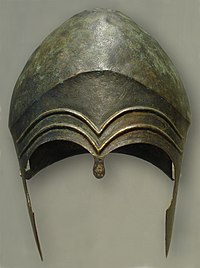 | 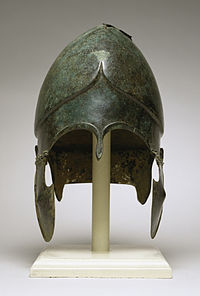 Халкидский шлем, ок. 500 до н. э. Халкидский шлем, ок. 500 до н. э. | 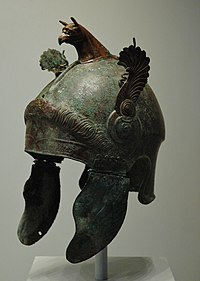 Шлем халкидского типа из южной Италии, 2-я половина IV века. Из-за отсутствия наносника квалифицируется некоторыми исследователями как аттический тип. Шлем халкидского типа из южной Италии, 2-я половина IV века. Из-за отсутствия наносника квалифицируется некоторыми исследователями как аттический тип. |
- ↑ Peter Connolly, Greece and Rome at War, 1981
- ↑ P. Dintsis, Hellenistische Helme, Rome, 1986
- ↑ Вес указан по каталогу коллекции Гуттмана.
ru.bywiki.com
Халкидский шлем — Википедия (с комментариями)
Материал из Википедии — свободной энциклопедии
Халкидские шлемы — тип шлемов, который вытеснил к концу V в. до н. э. коринфские шлемы в Древней Греции.
Есть разные версии происхождения названия. Как полагают некоторые ученые, такой тип шлема стали производить во 2-й половине VI в. до н. э. в греческих поселениях на Сицилии и юга Италии, основанных выходцами из Халкиса, греческого города на о-ве Эвбея, недалеко от Афин. Кроме того, само греческое слово χαλκός означает медь, бронза. Другой вариант, что изображения шлемов этого типа часто встречаются на керамике с полуострова Халкидика.
В отличие от коринфского наносник у этого шлема символический или вообще отсутствует, за счет чего улучшается обзор. В районе ушей, менее уязвимого направления для копий, появляется фигурный вырез, отчего нащечники становятся именно нащечниками, а не продолжением сплошного шлема. При этом теряется их прочность из-за возможности прогиба, но видимо, преимущество в комфорте перевешивало ослабление в защите. В то же время при попытке вернуть в нормальное положение отогнутый нащечник, он ломался. По этой причине позже нащечники крепились на петлях, как делали в шлемах римских легионеров. Нащечники достаточно широкие, прямоугольной или округлой формы, часто фронтальный край нащечника волнообразный. Зрительно шлем состоит из двух частей: верхний полусферический кумпол и нижняя часть, соединяющиеся визуально в районе рельефно выступающего ободка.
Известный автор Питер Конноли (Peter Connolly) классифицировал халкидские шлемы на 3 группы: с цельными нащечниками, с откидными нащечниками на петлях, с нащечниками на петлях и без наносника (аттический тип).[1] Другой автор Petros Dintsis разбил халкидские шлемы на 4 группы по форме нащечников, дополнительно подразделяя каждую группу на 2 подгруппы по способу крепления нащечников.[2]
По весу шлем легче коринфского, весит не более 1 кг,[3] вентиляция гораздо лучше. В шлемах римских легионеров заимствованы характерные широкие нащечники халкидских шлемов на петлях, в то время как сами шлемы были популярны в Италии у самнитов, этрусков и греков. Халкидский тип появился в VI в. до н. э. и был вытеснен из массового употребления более простыми пилосами и фракийскими шлемами в III в. до н. э. Хотя и продолжал жить в виде шлемов римской пехоты, вобравших в себя лучшее от разных народов, до перехода на более прочное и доступное железо.
Напишите отзыв о статье "Халкидский шлем"
Примечания
- ↑ Peter Connolly, Greece and Rome at War, 1981
- ↑ P. Dintsis, Hellenistische Helme, Rome, 1986
- ↑ Вес указан по каталогу коллекции Гуттмана.
См. также
Отрывок, характеризующий Халкидский шлем
Они начали окружать безоружную пару, явно стараясь пока не приближаться. – Ну, прислужник Дьявола, покажи нам свою силёнку! – храбрились «святые войны». – Что, не помогает твой рогатый господин? Незнакомцы нарочито себя злили, стараясь не поддаваться страху, так как про невероятную силу Огненного Учителя видимо были наслышаны достаточно. Левой рукой Светодар легко задвинул малыша за спину, а правую протянул к пришедшим, как бы загораживая вход в пещеру. – Я предупредил вас, остальное ваше дело... – сурово произнёс он. – Уходите и с вами ничего плохого не случится. Четверо вызывающе загоготали. Один из них, самый высокий, вытащив узкий нож, нагло им размахивая пошёл на Светодара... И тут Белояр, испуганно пискнув, вывернулся из державших его дедушкиных рук, и пулей метнувшись к человеку с ножом, начал больно колотить по его коленям подхваченным на бегу увесистым камушком. Незнакомец взревел от боли и, как муху, отшвырнул мальчика от себя подальше. Но беда-то была в том, что «пришедшие» всё ещё стояли у самого входа в пещеру... И незнакомец швырнул Белояра именно в сторону входа... Тонко закричав, мальчик перевернулся через голову, и лёгким мячиком полетел в пропасть... Это заняло всего несколько коротких секунд, и Светодар не успел... Ослепший от боли, он протянул руку к ударившему Белояра человеку – тот, не издав ни звука, пролетел в воздухе пару шагов и грохнувшись головой об стенку, грузным мешком съехал на каменный пол. Его «напарники», видя столь печальный конец своего вожака, кучей попятились во внутрь пещеры. И тут, Светодар сделал одну-единственную ошибку... Желая увидеть жив ли Белояр, он слишком близко пододвинулся к обрыву и лишь на мгновение отвернулся от убийц. Тут же один из них, молнией подскочив сзади, нанёс ему в спину резкий удар ногой... Тело Светодара улетело в бездну следом за маленьким Белояром... Всё было кончено. Не на что было больше смотреть. Подлые «человечки» толкая друг друга, быстренько убрались из пещеры... Какое-то время спустя, над обрывом у входа появилась белокурая маленькая головка. Ребёнок осторожно вылез на краешек уступа, и увидев, что внутри никого нет, горестно зарыдал... Видимо, весь дикий страх и обида, а может быть и ушибы, вылились водопадом слёз, смывая пережитое... Он плакал горько и долго, сам себе приговаривая, злясь и жалея, будто дедушка мог услышать... будто мог вернуться, чтобы его спасти... – Я же говорил – эта пещера злая!.. Я говорил... говорил тебе! – судорожно всхлипывая, причитал малыш – Ну почему ты меня не послушал! И что мне теперь делать?.. Куда мне теперь идти?.. Слёзы лились по грязным щёчкам жгучим потоком, разрывая маленькое сердечко... Белояр не знал, жив ли ещё его любимый дедушка... Не знал, вернутся ли обратно злые люди? Ему просто было до дикости страшно. И не было никого, чтобы его успокоить... никого, чтобы защитить... А Светодар неподвижно лежал на самом дне глубокой щели. Его широко распахнутые, чистые голубые глаза, ничего не видя, смотрели в небо. Он ушёл далеко-далеко, где ждала его Магдалина... и любимый отец с добрым Раданом... и сестрёнка Веста... и его нежная, ласковая Маргарита с дочкой Марией... и незнакомая внучка Тара... И все-все те, кто давно погиб, защищая свой родной и любимый мир от нелюди, называвшей себя человеками...Халкидский шлем Википедия
Халкидские шлемы — тип шлемов, который вытеснил к концу V в. до н. э. коринфские шлемы в Древней Греции.
Есть разные версии происхождения названия. Как полагают некоторые ученые, такой тип шлема стали производить во 2-й половине VI в. до н. э. в греческих поселениях на Сицилии и юга Италии, основанных выходцами из Халкиса, греческого города на о-ве Эвбея, недалеко от Афин. Кроме того, само греческое слово χαλκός означает медь, бронза. Другой вариант, что изображения шлемов этого типа часто встречаются на керамике с полуострова Халкидика.
В отличие от коринфского наносник у этого шлема символический или вообще отсутствует, за счет чего улучшается обзор. В районе ушей, менее уязвимого направления для копий, появляется фигурный вырез, отчего нащечники становятся именно нащечниками, а не продолжением сплошного шлема. При этом теряется их прочность из-за возможности прогиба, но видимо, преимущество в комфорте перевешивало ослабление в защите. В то же время при попытке вернуть в нормальное положение отогнутый нащечник, он ломался. По этой причине позже нащечники крепились на петлях, как делали в шлемах римских легионеров. Нащечники достаточно широкие, прямоугольной или округлой формы, часто фронтальный край нащечника волнообразный. Зрительно шлем состоит из двух частей: верхний полусферический кумпол и нижняя часть, соединяющиеся визуально в районе рельефно выступающего ободка.
Известный автор Питер Конноли (Peter Connolly) классифицировал халкидские шлемы на 3 группы: с цельными нащечниками, с откидными нащечниками на петлях, с нащечниками на петлях и без наносника (аттический тип).[1] Другой автор Petros Dintsis разбил халкидские шлемы на 4 группы по форме нащечников, дополнительно подразделяя каждую группу на 2 подгруппы по способу крепления нащечников.[2]
По весу шлем легче коринфского, весит не более 1 кг,[3] вентиляция гораздо лучше. В шлемах римских легионеров заимствованы характерные широкие нащечники халкидских шлемов на петлях, в то время как сами шлемы были популярны в Италии у самнитов, этрусков и греков. Халкидский тип появился в VI в. до н. э. и был вытеснен из массового употребления более простыми пилосами и фракийскими шлемами в III в. до н. э. Хотя и продолжал жить в виде шлемов римской пехоты, вобравших в себя лучшее от разных народов, до перехода на более прочное и доступное железо.
 |  Халкидский шлем, ок. 500 до н. э. Халкидский шлем, ок. 500 до н. э. |  Шлем халкидского типа из южной Италии, 2-я половина IV века. Из-за отсутствия наносника квалифицируется некоторыми исследователями как аттический тип. Шлем халкидского типа из южной Италии, 2-я половина IV века. Из-за отсутствия наносника квалифицируется некоторыми исследователями как аттический тип. |
Примечания
- ↑ Peter Connolly, Greece and Rome at War, 1981
- ↑ P. Dintsis, Hellenistische Helme, Rome, 1986
- ↑ Вес указан по каталогу коллекции Гуттмана.
См. также
wikiredia.ru
Халкидский шлем — Википедия (с комментариями)
Материал из Википедии — свободной энциклопедии
Халкидские шлемы — тип шлемов, который вытеснил к концу V в. до н. э. коринфские шлемы в Древней Греции.
Есть разные версии происхождения названия. Как полагают некоторые ученые, такой тип шлема стали производить во 2-й половине VI в. до н. э. в греческих поселениях на Сицилии и юга Италии, основанных выходцами из Халкиса, греческого города на о-ве Эвбея, недалеко от Афин. Кроме того, само греческое слово χαλκός означает медь, бронза. Другой вариант, что изображения шлемов этого типа часто встречаются на керамике с полуострова Халкидика.
В отличие от коринфского наносник у этого шлема символический или вообще отсутствует, за счет чего улучшается обзор. В районе ушей, менее уязвимого направления для копий, появляется фигурный вырез, отчего нащечники становятся именно нащечниками, а не продолжением сплошного шлема. При этом теряется их прочность из-за возможности прогиба, но видимо, преимущество в комфорте перевешивало ослабление в защите. В то же время при попытке вернуть в нормальное положение отогнутый нащечник, он ломался. По этой причине позже нащечники крепились на петлях, как делали в шлемах римских легионеров. Нащечники достаточно широкие, прямоугольной или округлой формы, часто фронтальный край нащечника волнообразный. Зрительно шлем состоит из двух частей: верхний полусферический кумпол и нижняя часть, соединяющиеся визуально в районе рельефно выступающего ободка.
Известный автор Питер Конноли (Peter Connolly) классифицировал халкидские шлемы на 3 группы: с цельными нащечниками, с откидными нащечниками на петлях, с нащечниками на петлях и без наносника (аттический тип).[1] Другой автор Petros Dintsis разбил халкидские шлемы на 4 группы по форме нащечников, дополнительно подразделяя каждую группу на 2 подгруппы по способу крепления нащечников.[2]
По весу шлем легче коринфского, весит не более 1 кг,[3] вентиляция гораздо лучше. В шлемах римских легионеров заимствованы характерные широкие нащечники халкидских шлемов на петлях, в то время как сами шлемы были популярны в Италии у самнитов, этрусков и греков. Халкидский тип появился в VI в. до н. э. и был вытеснен из массового употребления более простыми пилосами и фракийскими шлемами в III в. до н. э. Хотя и продолжал жить в виде шлемов римской пехоты, вобравших в себя лучшее от разных народов, до перехода на более прочное и доступное железо.
Напишите отзыв о статье "Халкидский шлем"
Примечания
- ↑ Peter Connolly, Greece and Rome at War, 1981
- ↑ P. Dintsis, Hellenistische Helme, Rome, 1986
- ↑ Вес указан по каталогу коллекции Гуттмана.
См. также
Отрывок, характеризующий Халкидский шлем
Кроме того, теперь в русской армии преобразовался весь штаб. Замещались места убитого Багратиона и обиженного, удалившегося Барклая. Весьма серьезно обдумывали, что будет лучше: А. поместить на место Б., а Б. на место Д., или, напротив, Д. на место А. и т. д., как будто что нибудь, кроме удовольствия А. и Б., могло зависеть от этого. В штабе армии, по случаю враждебности Кутузова с своим начальником штаба, Бенигсеном, и присутствия доверенных лиц государя и этих перемещений, шла более, чем обыкновенно, сложная игра партий: А. подкапывался под Б., Д. под С. и т. д., во всех возможных перемещениях и сочетаниях. При всех этих подкапываниях предметом интриг большей частью было то военное дело, которым думали руководить все эти люди; но это военное дело шло независимо от них, именно так, как оно должно было идти, то есть никогда не совпадая с тем, что придумывали люди, а вытекая из сущности отношения масс. Все эти придумыванья, скрещиваясь, перепутываясь, представляли в высших сферах только верное отражение того, что должно было совершиться. «Князь Михаил Иларионович! – писал государь от 2 го октября в письме, полученном после Тарутинского сражения. – С 2 го сентября Москва в руках неприятельских. Последние ваши рапорты от 20 го; и в течение всего сего времени не только что ничего не предпринято для действия противу неприятеля и освобождения первопрестольной столицы, но даже, по последним рапортам вашим, вы еще отступили назад. Серпухов уже занят отрядом неприятельским, и Тула, с знаменитым и столь для армии необходимым своим заводом, в опасности. По рапортам от генерала Винцингероде вижу я, что неприятельский 10000 й корпус подвигается по Петербургской дороге. Другой, в нескольких тысячах, также подается к Дмитрову. Третий подвинулся вперед по Владимирской дороге. Четвертый, довольно значительный, стоит между Рузою и Можайском. Наполеон же сам по 25 е число находился в Москве. По всем сим сведениям, когда неприятель сильными отрядами раздробил свои силы, когда Наполеон еще в Москве сам, с своею гвардией, возможно ли, чтобы силы неприятельские, находящиеся перед вами, были значительны и не позволяли вам действовать наступательно? С вероятностию, напротив того, должно полагать, что он вас преследует отрядами или, по крайней мере, корпусом, гораздо слабее армии, вам вверенной. Казалось, что, пользуясь сими обстоятельствами, могли бы вы с выгодою атаковать неприятеля слабее вас и истребить оного или, по меньшей мере, заставя его отступить, сохранить в наших руках знатную часть губерний, ныне неприятелем занимаемых, и тем самым отвратить опасность от Тулы и прочих внутренних наших городов. На вашей ответственности останется, если неприятель в состоянии будет отрядить значительный корпус на Петербург для угрожания сей столице, в которой не могло остаться много войска, ибо с вверенною вам армиею, действуя с решительностию и деятельностию, вы имеете все средства отвратить сие новое несчастие. Вспомните, что вы еще обязаны ответом оскорбленному отечеству в потере Москвы. Вы имели опыты моей готовности вас награждать. Сия готовность не ослабнет во мне, но я и Россия вправе ожидать с вашей стороны всего усердия, твердости и успехов, которые ум ваш, воинские таланты ваши и храбрость войск, вами предводительствуемых, нам предвещают».wiki-org.ru
Халкидский шлем Вики
Халкидские шлемы — тип шлемов, который вытеснил к концу V в. до н. э. коринфские шлемы в Древней Греции.
Есть разные версии происхождения названия. Как полагают некоторые ученые, такой тип шлема стали производить во 2-й половине VI в. до н. э. в греческих поселениях на Сицилии и юга Италии, основанных выходцами из Халкиса, греческого города на о-ве Эвбея, недалеко от Афин. Кроме того, само греческое слово χαλκός означает медь, бронза. Другой вариант, что изображения шлемов этого типа часто встречаются на керамике с полуострова Халкидика.
В отличие от коринфского наносник у этого шлема символический или вообще отсутствует, за счет чего улучшается обзор. В районе ушей, менее уязвимого направления для копий, появляется фигурный вырез, отчего нащечники становятся именно нащечниками, а не продолжением сплошного шлема. При этом теряется их прочность из-за возможности прогиба, но видимо, преимущество в комфорте перевешивало ослабление в защите. В то же время при попытке вернуть в нормальное положение отогнутый нащечник, он ломался. По этой причине позже нащечники крепились на петлях, как делали в шлемах римских легионеров. Нащечники достаточно широкие, прямоугольной или округлой формы, часто фронтальный край нащечника волнообразный. Зрительно шлем состоит из двух частей: верхний полусферический кумпол и нижняя часть, соединяющиеся визуально в районе рельефно выступающего ободка.
Известный автор Питер Конноли (Peter Connolly) классифицировал халкидские шлемы на 3 группы: с цельными нащечниками, с откидными нащечниками на петлях, с нащечниками на петлях и без наносника (аттический тип).[1] Другой автор Petros Dintsis разбил халкидские шлемы на 4 группы по форме нащечников, дополнительно подразделяя каждую группу на 2 подгруппы по способу крепления нащечников.[2]
По весу шлем легче коринфского, весит не более 1 кг,[3] вентиляция гораздо лучше. В шлемах римских легионеров заимствованы характерные широкие нащечники халкидских шлемов на петлях, в то время как сами шлемы были популярны в Италии у самнитов, этрусков и греков. Халкидский тип появился в VI в. до н. э. и был вытеснен из массового употребления более простыми пилосами и фракийскими шлемами в III в. до н. э. Хотя и продолжал жить в виде шлемов римской пехоты, вобравших в себя лучшее от разных народов, до перехода на более прочное и доступное железо.
 |  Халкидский шлем, ок. 500 до н. э. Халкидский шлем, ок. 500 до н. э. |  Шлем халкидского типа из южной Италии, 2-я половина IV века. Из-за отсутствия наносника квалифицируется некоторыми исследователями как аттический тип. Шлем халкидского типа из южной Италии, 2-я половина IV века. Из-за отсутствия наносника квалифицируется некоторыми исследователями как аттический тип. |
Примечания[ | код]
- ↑ Peter Connolly, Greece and Rome at War, 1981
- ↑ P. Dintsis, Hellenistische Helme, Rome, 1986
- ↑ Вес указан по каталогу коллекции Гуттмана.
См. также[ | код]
ru.wikibedia.ru
Халкидский шлем - WikiVisually
1. Коринфский шлем – The Corinthian helmet originated in ancient Greece and took its name from the city-state of Corinth. It was a made of bronze which in its later styles covered the entire head and neck, with slits for the eyes. A large curved projection protected the nape of the neck, out of combat, a Greek hoplite would wear the helmet tipped upward for comfort. This practice gave rise to a series of variant forms in Italy, numerous examples of Corinthian helmets have been excavated, and they are frequently depicted on pottery. The Corinthian helmet was depicted on more sculpture than any other helmet, it seems the Greeks romantically associated it with glory, the Romans also revered it, from copies of Greek originals to sculpture of their own. Given many Roman appropriations of ancient Greek ideas, this change was inspired by the over the forehead position common in Greek art. This helmet remained in use well into the 1st century AD, herodotus mentions the Corinthian helmet in his Histories when writing of the Machlyes and Auseans, two tribes living along the River Triton in ancient Libya. The tribes chose annually two teams of the fairest maidens who fought each other ceremonially with sticks and stones and they were dressed in the finest Greek panoply topped off with a Corinthian helmet. The ritual fight was part of a festival honoring the virgin goddess Athena, young women who succumbed to their wounds during the ordeal were thought to have been punished by the goddess for lying about their virginity. An earlier version of the Corinthian helmet is worn by the Marvel Comics super villain Magneto
2. Древняя Греция – Ancient Greece was a civilization belonging to a period of Greek history from the Greek Dark Ages of the 12th-9th centuries BC to the end of antiquity. Immediately following this period was the beginning of the Early Middle Ages and this was followed by the period of Classical Greece, an era that began with the Greco-Persian Wars, lasting from the 5th to 4th centuries BC. Due to the conquests by Alexander the Great of Macedonia, Hellenistic civilization flourished from Central Asia to the end of the Mediterranean Sea. Classical Greek culture, especially philosophy, had a influence on ancient Rome. For this reason Classical Greece is generally considered to be the culture which provided the foundation of modern Western culture and is considered the cradle of Western civilization. Classical Antiquity in the Mediterranean region is considered to have begun in the 8th century BC. Classical Antiquity in Greece is preceded by the Greek Dark Ages and this period is succeeded, around the 8th century BC, by the Orientalizing Period during which a strong influence of Syro-Hittite, Jewish, Assyrian, Phoenician and Egyptian cultures becomes apparent. The end of the Dark Ages is also dated to 776 BC. The Archaic period gives way to the Classical period around 500 BC, Ancient Periods Astronomical year numbering Dates are approximate, consult particular article for details The history of Greece during Classical Antiquity may be subdivided into five major periods. The earliest of these is the Archaic period, in which artists made larger free-standing sculptures in stiff, the Archaic period is often taken to end with the overthrow of the last tyrant of Athens and the start of Athenian Democracy in 508 BC. It was followed by the Classical period, characterized by a style which was considered by observers to be exemplary, i. e. classical, as shown in the Parthenon. This period saw the Greco-Persian Wars and the Rise of Macedon, following the Classical period was the Hellenistic period, during which Greek culture and power expanded into the Near and Middle East. This period begins with the death of Alexander and ends with the Roman conquest, Herodotus is widely known as the father of history, his Histories are eponymous of the entire field. Herodotus was succeeded by authors such as Thucydides, Xenophon, Demosthenes, Plato, most of these authors were either Athenian or pro-Athenian, which is why far more is known about the history and politics of Athens than those of many other cities. Their scope is limited by a focus on political, military and diplomatic history, ignoring economic. In the 8th century BC, Greece began to emerge from the Dark Ages which followed the fall of the Mycenaean civilization, literacy had been lost and Mycenaean script forgotten, but the Greeks adopted the Phoenician alphabet, modifying it to create the Greek alphabet. The Lelantine War is the earliest documented war of the ancient Greek period and it was fought between the important poleis of Chalcis and Eretria over the fertile Lelantine plain of Euboea. Both cities seem to have suffered a decline as result of the long war, a mercantile class arose in the first half of the 7th century BC, shown by the introduction of coinage in about 680 BC
3. Эвбея – Euboea or Evia is the second-largest Greek island in area and population, after Crete. The narrow Euripus Strait separates it from Boeotia in mainland Greece, in general outline it is a long and narrow, seahorse-shaped island, it is about 180 kilometres long, and varies in breadth from 50 kilometres to 6 kilometres. It forms most of the unit of Euboea, which also includes Skyros. Its ancient and current name, Εὔβοια, derives from the words εὖ good, the phrase στὸν Εὔριπον to Evripos, rebracketed as στὸ Νεὔριπον to Nevripos, became Negroponte in Italian by folk etymology, the ponte bridge being interpreted as the bridge of Chalcis. That name entered common use in the West in the 13th century, with variants being Egripons, Negripo. Under Ottoman rule, the island and its capital were known as Eğriboz or Ağriboz, Euboea was believed to have originally formed part of the mainland, and to have been separated from it by an earthquake. This is fairly probable, because it lies in the neighbourhood of a fault line, in the neighbourhood of Chalcis, both to the north and the south, the bays are so confined as to make plausible the story of Agamemnons fleet having been detained there by contrary winds. At Chalcis itself, where the strait is narrowest at only 40 m, the extraordinary changes of tide that take place in this passage have been a subject of note since classical times. At one moment the current runs like a river in one direction, a bridge was first constructed here in the twenty-first year of the Peloponnesian War. Geography and nature divide the island itself into three parts, the fertile and forested north, the mountainous centre, with agriculture limited to the coastal valleys. The main mountains include Dirfi, Pyxaria in the northeast and Ochi, the neighboring gulfs are the Pagasetic Gulf in the north, Malian Gulf, North Euboean Gulf in the west, the Euboic Sea and the Petalion Gulf. At the 2001 census the island had a population of 198,130, the history of the island of Euboea is largely that of its two principal cities, Chalcis and Eretria, both mentioned in the Catalogue of Ships. Both cities were settled by Ionian Greeks from Attica, and would eventually settle numerous colonies in Magna Graecia and Sicily, such as Cumae and Rhegium and this opened new trade routes to the Greeks, and extended the reach of western civilization. The classicist Barry B. Powell has proposed that Euboea may have been where the Greek alphabet was first employed, 775-750 BC, and that Homer may have spent part of his life on the island. Chalcis and Eretria were rival cities, and appear to have been equally powerful for a while, one of the earliest major military conflicts in Greek history took place between them, known as the Lelantine War, in which many other Greek city-states also took part. Following the infamous battles of Thermopylae and Artemisium, Persian forces captured and sacked Athens, and also took Euboea, Boeotia, in 490 BC, Eretria was utterly ruined and its inhabitants were transported to Persia. Though it was restored nearby its original site after the Battle of Marathon, both cities gradually lost influence to Athens, which saw Euboea as a strategic territory. Euboea was an important source of grain and cattle, and controlling the island meant Athens could prevent invasion, Athens invaded Chalcis in 506 BC and settled 4,000 Attic Greeks on their lands
4. Афины – Athens is the capital and largest city of Greece. In modern times, Athens is a cosmopolitan metropolis and central to economic, financial, industrial, maritime. In 2015, Athens was ranked the worlds 29th richest city by purchasing power, Athens is recognised as a global city because of its location and its importance in shipping, finance, commerce, media, entertainment, arts, international trade, culture, education and tourism. It is one of the biggest economic centres in southeastern Europe, with a financial sector. The municipality of Athens had a population of 664,046 within its limits. The urban area of Athens extends beyond its administrative city limits. According to Eurostat in 2011, the Functional urban areas of Athens was the 9th most populous FUA in the European Union, Athens is also the southernmost capital on the European mainland. The city also retains Roman and Byzantine monuments, as well as a number of Ottoman monuments. Athens is home to two UNESCO World Heritage Sites, the Acropolis of Athens and the medieval Daphni Monastery, Athens was the host city of the first modern-day Olympic Games in 1896, and 108 years later it welcomed home the 2004 Summer Olympics. In Ancient Greek, the name of the city was Ἀθῆναι a plural, in earlier Greek, such as Homeric Greek, the name had been current in the singular form though, as Ἀθήνη. It was possibly rendered in the later on, like those of Θῆβαι and Μυκῆναι. During the medieval period the name of the city was rendered once again in the singular as Ἀθήνα, an etiological myth explaining how Athens has acquired its name was well known among ancient Athenians and even became the theme of the sculpture on the West pediment of the Parthenon. The goddess of wisdom, Athena, and the god of the seas, Poseidon had many disagreements, in an attempt to compel the people, Poseidon created a salt water spring by striking the ground with his trident, symbolizing naval power. However, when Athena created the tree, symbolizing peace and prosperity. Different etymologies, now rejected, were proposed during the 19th century. Christian Lobeck proposed as the root of the name the word ἄθος or ἄνθος meaning flower, ludwig von Döderlein proposed the stem of the verb θάω, stem θη- to denote Athens as having fertile soil. In classical literature, the city was referred to as the City of the Violet Crown, first documented in Pindars ἰοστέφανοι Ἀθᾶναι. In medieval texts, variant names include Setines, Satine, and Astines, today the caption η πρωτεύουσα, the capital, has become somewhat common
5. Аттический шлем – The Attic helmet was a type of helmet that originated in Classical Greece and was widely used in Italy and the Hellenistic world until well into the Roman Empire. Its name is a modern convention, Terms such as Illyrian and Attic are used in archaeology for convenience to denote a particular type of helmet. The Attic helmet was similar to the Chalcidian helmet but lacked a nose guard, although in Greece itself its use was not as widespread as the Corinthian or Phrygian types, the Attic helmet became very popular in Italy, where most examples have been found. Many Italian peoples used variations of the helmet, but archaeologically it has been especially prominent in Samnite and Lucanian burials. As such, a form of Attic helmet has become part of the image of a Roman officer. However, no remains of this type of helmet have been found to date. The closest surviving Imperial Roman helmet to the type illustrated in relief sculpture dates to the 2nd century AD and it has been classified as a pseudo-Attic helmet by some scholars. It is of tinned bronze and is elaborately decorated with an integral crest raised from the skull incorporating an eagle
6. Пилос (шлем) – The pileus was a brimless, felt cap worn in Ancient Greece and surrounding regions, later also introduced in Ancient Rome. The Greek πιλίδιον and Latin pilleolus were smaller versions, similar to a skullcap, the pileus was especially associated with the manumission of slaves, who wore it upon their liberation. It became emblematic of liberty and freedom from bondage, the pileus, is very common in Albania and Kosovo even today. The pilos was a common conical travelling hat in Illyria and Ancient Greece, the pilos is the brimless version of the petasos. It could be made of felt or leather, pilos caps often identify the mythical twins, or Dioscuri, Castor and Pollux, as represented in sculptures, bas-reliefs and on ancient ceramics. Their caps were supposedly the remnants of the egg from which they hatched, the pilos appears on votive figurines of boys at the sanctuary of the Cabeiri at Thebes, the Cabeirion. In warfare, the pilos helmet was often worn by the peltast light infantry, in conjunction with the exomis. The pilos helmet was made of bronze in the shape as the pilos which was presumably sometimes worn under the helmet for comfort. The first widespread adoption of the pilos helmet occurred in Sparta towards the end of the 5th century BC, in Ancient Rome, a slave was freed in a ceremony in which a praetor touched the slave with a rod called a vindicta and pronounced him to be free. The slaves head was shaved and a pileus was placed upon it, both the vindicta and the cap were considered symbols of Libertas, the goddess representing liberty. This was a form of extra-legal manumission considered less legally sound than manumission in a court of law, one 19th century dictionary of classical antiquity states that, Among the Romans the cap of felt was the emblem of liberty. When a slave obtained his freedom he had his head shaved, hence the phrase servos ad pileum vocare is a summons to liberty, by which slaves were frequently called upon to take up arms with a promise of liberty. The figure of Liberty on some of the coins of Antoninus Pius, struck A. D.145, holds this cap in the right hand. ISBN 1-85532-867-4 Institute of France – Greek Costume Antiquitas – Casque corinthien et pilos A Brief History of Greek Helmets by Jesse Obert – AncientPlanet Online Journal Vol.2,48 –59
7. Метрополитен-музей – The Metropolitan Museum of Art, colloquially the Met, is located in New York City and is the largest art museum in the United States, and is among the most visited art museums in the world. Its permanent collection contains two million works, divided among seventeen curatorial departments. The main building, on the edge of Central Park along Manhattans Museum Mile, is by area one of the worlds largest art galleries. A much smaller second location, The Cloisters at Fort Tryon Park in Upper Manhattan, contains a collection of art, architecture. On March 18,2016, the museum opened the Met Breuer museum at Madison Avenue in the Upper East Side, it extends the museums modern, the Met maintains extensive holdings of African, Asian, Oceanian, Byzantine, Indian, and Islamic art. The museum is home to collections of musical instruments, costumes and accessories, as well as antique weapons. Several notable interiors, ranging from first-century Rome through modern American design, are installed in its galleries, the Metropolitan Museum of Art was founded in 1870. The founders included businessmen and financiers, as well as leading artists and thinkers of the day and it opened on February 20,1872, and was originally located at 681 Fifth Avenue. The Met maintains extensive holdings of African, Asian, Oceanian, Byzantine, the museum is also home to encyclopedic collections of musical instruments, costumes and accessories, and antique weapons and armor from around the world. A number of interiors, ranging from 1st century Rome through modern American design, are permanently installed in the Mets galleries. In addition to its permanent exhibitions, the Met organizes and hosts traveling shows throughout the year. The director of the museum is Thomas P. Campbell, a long-time curator and it was announced on February 28th,2017 that Campbell will be stepping down as the Mets director and CEO, effective June. On March 1st,2017 the BBC reported that Daniel Weiss shall be the acting CEO until a replacement is found, Beginning in the late 19th century, the Met started to acquire ancient art and artifacts from the Near East. From a few tablets and seals, the Mets collection of Near Eastern art has grown to more than 7,000 pieces. The highlights of the include a set of monumental stone lamassu, or guardian figures. The Mets Department of Arms and Armor is one of the museums most popular collections. Among the collections 14,000 objects are many pieces made for and used by kings and princes, including armor belonging to Henry VIII of England, Henry II of France, Rockefeller donated his more than 3, 000-piece collection to the museum. The Mets Asian department holds a collection of Asian art, of more than 35,000 pieces, the collection dates back almost to the founding of the museum, many of the philanthropists who made the earliest gifts to the museum included Asian art in their collections
8. Гоплит – Hoplites were citizen-soldiers of Ancient Greek city-states who were primarily armed with spears and shields. Hoplite soldiers utilized the phalanx formation in order to be effective in war with fewer soldiers, the hoplites were primarily represented by free citizens—propertied farmers and artisans—who were able to afford the bronze armour suit and weapons. Hoplites were not professional soldiers and often lacked sufficient military training, although some states did maintain a small elite professional unit, hoplite soldiers were relied on heavily and made up the bulk of ancient Greek armies of the time. In the 8th or 7th century BC, Greek armies adopted a military innovation known as the phalanx formation, the formation proved successful in defeating the Persians when employed by the Athenians at the Battle of Marathon in 490 BC during the First Greco-Persian War. The phalanx was also employed by the Greeks at the Battle of Thermopylae in 480 BC. The word hoplite derives from hoplon, the name for the type of shield used by the soldiers, however, the shield was more commonly known as an aspis, so the word hopla may refer to the soldiers weapons or even their full armament. In the modern Hellenic Army, the word hoplite is used to refer to an infantryman, the fragmented political structure of Ancient Greece, with many competing city-states, increased the frequency of conflict, but at the same time limited the scale of warfare. Limited manpower did not allow most Greek city-states to form armies which could operate for long periods because they were generally not formed from professional soldiers. Most soldiers had careers as farmers or workers and returned to these professions after the campaign, all hoplites were expected to take part in any military campaign when called for duty by leaders of the state. This inevitably reduced the duration of campaigns and often resulted in the campaign season being restricted to one summer. Armies generally marched directly to their destination, and in cases the battlefield was agreed to by the contestants in advance. Battles were fought on ground, and hoplites preferred to fight with high terrain on both sides of the phalanx so the formation could not be flanked. An example of this was the Battle of Thermopylae, where the Spartans specifically chose a narrow pass to make their stand against the massive Persian army. The vastly outnumbered Greeks held off the Persians for seven days, when battles occurred, they were usually set piece and intended to be decisive. The battlefield would be flat and open to facilitate phalanx warfare and these battles were usually short and required a high degree of discipline. At least in the classical period, when cavalry was present, its role was restricted to protection of the flanks of the phalanx, pursuit of a defeated enemy. Light infantry and missile troops took part in the battles but their role was less important, before the the opposing phalanxes engaged, the light troops would skirmish with the enemies light forces, and then protect the flanks and rear of the phalanx. The military structure created by the Spartans was a phalanx formation
9. Кираса – A cuirass is a piece of armour, formed of a single or multiple pieces of metal or other rigid material which covers the front of the torso. In a suit of armour, the cuirass was generally connected to a back piece, cuirass could also refer to the complete torso-protecting armour. As parts of the military equipment of classic antiquity, cuirasses and corsets of bronze, iron. Secondary protection for the breast was worn in earlier times by men-at-arms in addition to mail hauberks and it was not until the 14th century that the plate armour became an established part of medieval armour. The Roman emperor Galba donned a cuirass just before he went to his death. Suetonius records in 12 Caesars that, As was offering sacrifice on the morning before he was killed and he did however put on a linen cuirass, though he openly declared that it would afford little protection against so many swords. The cuirass was almost universally worn throughout its lifespan as a form of armour, the cuirass was always made long enough to rest on the hips. If it had been suspended by the shoulders, its weight would have exhausted its wearer. In the second half of the 15th century, the cuirass was occasionally superseded by the brigandine jacket, in essence, the brigandine jacket was constructed of metal plates sewn into a fabric jacket. About 1550, the breast-piece of the cuirass was characterized by a central ridge, called the tapul. Somewhat later, the tapul was moved lower on the breast, eventually, the profile of the plate began to resemble a pea pod and, as such, was referred to as the peascod cuirass. Corslets provided with both breast and back pieces were worn by foot-soldiers in the 17th century, while their comrades were equipped in heavier and stronger cuirasses. These defenses continued in use longer than any single piece of armour. Both the French and German heavy cavalry wore cuirasses in parade leading up to World War I, in the early part of that conflict, they painted their cuirasses black and wore canvas protection covers over the neo-Roman style helmets. Some years after Waterloo, certain historical cuirasses were taken from their repose in the Tower of London and adapted for service by the Life Guards, for parade purposes, the Prussian Gardes du Corps and other corps wore cuirasses of richly decorated leather. During the Heian period, Japanese armourers started to use leather as a material, by the end of the Heian period, the Japanese cuirass had arrived at the shape recognized as part of iconic samurai armor. Scales of iron and leather, bound together by silk lace, were used to construct samurai armours, the introduction of firearms to Japan in 1543 resulted in the development of a cuirass constructed of solid iron plates. The use of the samurai cuirass lasted until the 1860s when an army using conventional uniforms was established
10. Линоторакс – The linothorax is a type of upper body armor used by the ancient Greeks, as well as other Hellenic kingdoms including Macedonia, from the Mycenaean period through the Hellenistic period. The modern term linothorax is based on the Greek λινοθώραξ, which means wearing a breastplate of linen, the term thorax was the word for breastplate during this era and was traditionally made of metal in most contexts. The linothorax were made of linen glued in layers with animal fat, the earliest attested account of a linothorax used for battle is recorded in Book 2 of Homers Iliad. It is worn by Ajax the Lesser and is described in brief, Homer, composing stories long before the great armies of Athens, Thebes, Sparta and Macedon, surely understood what the armor was. However, the extent to which it was used can not be determined as the texts were not accurate accounts of specific time periods. An educated guess can be made, however, based on its use by Alexander the Great, and its mention by other such as Herodotus, Livy, Strabo. This could have been due to the price, lesser weight. Its high point in vase paintings, sculptural reliefs and artistic depictions corresponds with the time of the Persian Wars, by the time of the Peloponnesian War it was still used, and continued to seemingly flourish well into the Hellenistic period. Very few details of the construction are found in Homer and other authors of this era. The linen fabric was reinforced by a sheet around the waist, usually in a scale mail style. Metal plates or flaps called pteryges were protecting various parts of the body, a zoster was a belt, probably of leather with metal plates, worn around the waist over the other parts of the cuirass. The actual method of constructing a linothorax is unknown as no example has survived from ancient times, the only piece of armor that resembles the linothorax was discovered in a tomb in Vergina, Northern Greece. This armor, which was most probably worn for ceremony, was constructed from iron with gold embellishments. It is probably a copy of a linothorax. Since visual evidence is limited to paintings and sculptural reliefs, rather than actual surviving models, modern scholars can only guess at its makeup. There are a number of paintings that show what appear to be metal scales covering the armor. The type of material went into the construction of the linothorax is still hotly debated by academics. Some of the common theories of its construction involve laminated or quilting many layers of linen fabric
wikivisually.com
Халкидский шлем
Халкидские шлемы — тип шлемов, который вытеснил к концу V в. до н. э. коринфские шлемы в Древней Греции.
Есть разные версии происхождения названия. Как полагают некоторые ученые, такой тип шлема стали производить во 2-й половине VI в. до н. э. в греческих поселениях на Сицилии и юга Италии, основанных выходцами из Халкиса, греческого города на о-ве Эвбея, недалеко от Афин. Кроме того, само греческое слово χαλκός означает медь, бронза. Другой вариант, что изображения шлемов этого типа часто встречаются на керамике с полуострова Халкидика.
В отличие от коринфского наносник у этого шлема символический или вообще отсутствует, за счет чего улучшается обзор. В районе ушей, менее уязвимого направления для копий, появляется фигурный вырез, отчего нащечники становятся именно нащечниками, а не продолжением сплошного шлема. При этом теряется их прочность из-за возможности прогиба, но видимо, преимущество в комфорте перевешивало ослабление в защите. В то же время при попытке вернуть в нормальное положение отогнутый нащечник, он ломался. По этой причине позже нащечники крепились на петлях, как делали в шлемах римских легионеров. Нащечники достаточно широкие, прямоугольной или округлой формы, часто фронтальный край нащечника волнообразный. Зрительно шлем состоит из двух частей: верхний полусферический кумпол и нижняя часть, соединяющиеся визуально в районе рельефно выступающего ободка.
Известный автор Питер Конноли (Peter Connolly) классифицировал халкидские шлемы на 3 группы: с цельными нащечниками, с откидными нащечниками на петлях, с нащечниками на петлях и без наносника (аттический тип).[1] Другой автор Petros Dintsis разбил халкидские шлемы на 4 группы по форме нащечников, дополнительно подразделяя каждую группу на 2 подгруппы по способу крепления нащечников.[2]
По весу шлем легче коринфского, весит не более 1 кг,[3] вентиляция гораздо лучше. В шлемах римских легионеров заимствованы характерные широкие нащечники халкидских шлемов на петлях, в то время как сами шлемы были популярны в Италии у самнитов, этрусков и греков. Халкидский тип появился в VI в. до н. э. и был вытеснен из массового употребления более простыми пилосами и фракийскими шлемами в III в. до н. э. Хотя и продолжал жить в виде шлемов римской пехоты, вобравших в себя лучшее от разных народов, до перехода на более прочное и доступное железо.
 |  Халкидский шлем, ок. 500 до н. э. Халкидский шлем, ок. 500 до н. э. |  Шлем халкидского типа из южной Италии, 2-я половина IV века. Из-за отсутствия наносника квалифицируется некоторыми исследователями как аттический тип. Шлем халкидского типа из южной Италии, 2-я половина IV века. Из-за отсутствия наносника квалифицируется некоторыми исследователями как аттический тип. |
www.wikiplanet.click

